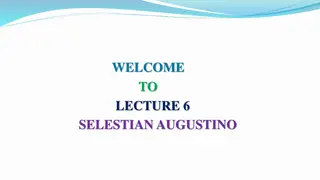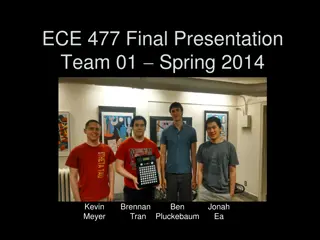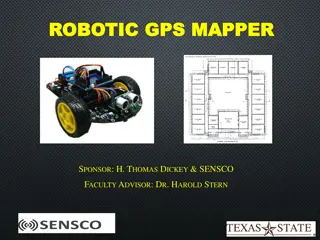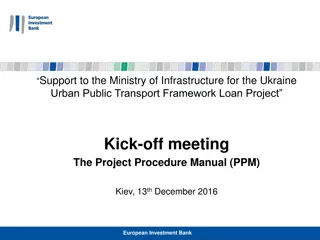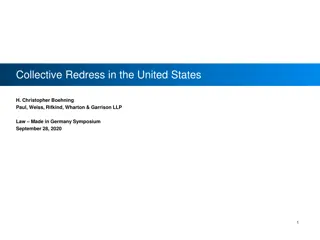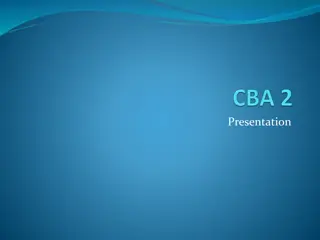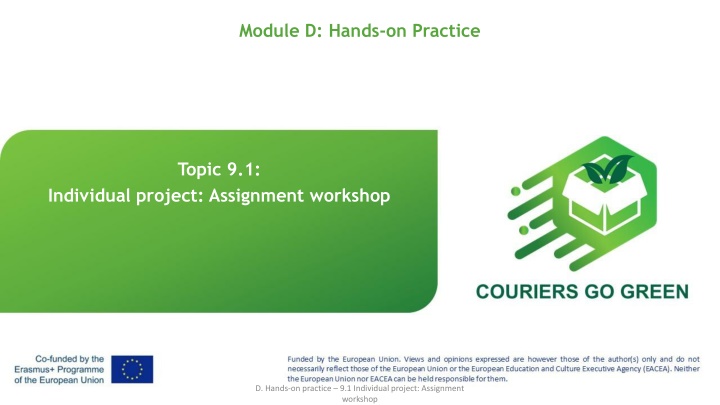
Individual Project Analysis and Presentation
This project involves in-depth review of acquired knowledge through case analysis, culminating in the development of individual projects shared via an expert blog. It includes selecting a subject, conducting research, utilizing sources like official sites, national government data, and scientific publications, analyzing findings, and presenting conclusions. The structured process aims to enhance understanding and engagement in course topics.
Uploaded on | 2 Views
Download Presentation

Please find below an Image/Link to download the presentation.
The content on the website is provided AS IS for your information and personal use only. It may not be sold, licensed, or shared on other websites without obtaining consent from the author. If you encounter any issues during the download, it is possible that the publisher has removed the file from their server.
You are allowed to download the files provided on this website for personal or commercial use, subject to the condition that they are used lawfully. All files are the property of their respective owners.
The content on the website is provided AS IS for your information and personal use only. It may not be sold, licensed, or shared on other websites without obtaining consent from the author.
E N D
Presentation Transcript
Module D: Hands-on Practice Topic 9.1: Individual project: Assignment workshop 1 D. Hands-on practice 9.1 Individual project: Assignment workshop
Contents 1. Purpose 2. Process 3. Guide 4. Project presentation template 5. Subject inventory D. Hands-on practice 9.1 Individual project: Assignment workshop 2
1. Purpose Critical review and deepening of knowledge acquired by the course through the analysis of a particular case or approach. Exchange of findings and inspirational motivation through the Couriers Go Green Expert Blog. D. Hands-on practice 9.1 Individual project: Assignment workshop 3
2. Process This activity is an added option to the regular training package. Following the guide and steps of 9.1 and 9.2, each trainee will select a subject within the suggested topic list and develop her/his own, individual project. After the desktop research, implementation of the project template and the presentation and discussion within the team, each team member will be able to share their project through the Couriers Go Green Expert Blog. D. Hands-on practice 9.1 Individual project: Assignment workshop 4
Process and structure: Purpose: What does the subject mean and why is it important to analyse? Objectives: What are the partial components of the subject which you aim to analyse and how these are combined to address the purpose? Method: Which sources will you use and how will you analyse the information? Findings: How will you present and assess the information? Conclusions: Which are the conclusive remarks by synthesizing the findings in relation to the purpose and objectives? 3. Guide Select a subject related to a course topic from Subject Inventory (see slide: 6) Prepare a process and structure of your project STEP 1. Subject selection and preparation Begin with the reference list of the related topic Conduct on-line search of documents by using the appropriate combination of key-words Use trustworthy sites and documentation Type of sources: Official sites of international organisations and services (e.g. United Nations; ITF; World Bank; UITP; European Commission; ALICE Alliance; MaaS Alliance; ERTRAC; ERTICO; ELTIS; CIVITAS; EIT Urban Mobility; IEA; European Environment Agency; Transport & Environment Eurostat etc.) Official national government and statistical sites and documentation Private companies official data Consultant reporting and studies Scientific publications STEP 2. Collect information D. Hands-on practice 9.1 Individual project: Assignment workshop 5
3. Guide Extract information from sources and organise according to the process and structure of STEP 1 Develop a reference list STEP 3. Organise and manage information Don t forget to: Introduce numbered bibliographical references([1], [2] etc.) related to the presented findings Introduce the full reference list at the last slide of the presentation e.g.: Vans is the fastest growing source of carbon emissions from transport, accounting for 13% of road transport CO2 emissions [3] Structure the presentation according to the structure of STEP 1 see next slide (7-8 slides recommended) Introduce the collected information based on the presentation structure Develop your critical analysis and conclusions and appropriately introduce your remarks STEP 4. Prepare the presentation [3] Transport & Environment, Road Freight (https://www.transportenvironment.org/cha llenges/road-freight/) D. Hands-on practice 9.1 Individual project: Assignment workshop 6
4. Project presentation template Order of slide Title of slide Notes 1 Title page Project title Date Name, affiliation and contact details (optional) 2 Contents The pre-designed contents are: Purpose and objectives Method Findings Conclusions References 3 Purpose and objectives Purpose answers to the meaning and importance of the project s subject Objectives describe the specific components of the subject which you analyse and how they contribute to the purpose 4 Method Describe in a few bullets which type of sources (internet pages, articles, reports etc.) and how they were analysed (key- words search, analysis of statistical data etc.) 5 Findings Present the main findings of your analysis using appropriately text and/or tables and/or figures etc. 6 Conclusions Comprehensively present your conclusive remarks by summarizing the meaning of the findings in relation to the purpose and objectives 7 References Insert a list of references corresponding to the sources (bibliography) of your project D. Hands-on practice 9.1 Individual project: Assignment workshop 7
5. Subject inventory Module A. Governance 1. European Union s policy and legislative framework on green city logistics Subjects A.1.1 Sustainable Urban Logistics Plan for the city of your residence A.1.2 Designing a low-carbon freight transport policy for the city of your residence Module A. Governance 2. Opportunities for funding and supporting the green transition of urban freight transportation Subjects A.2.1 Find out more about European Regional Development Fund's previous and recent projects in your region/country/area. A.2.2 Discover more about Sustainable Urban Mobility Planning and it relevace to Trans-European Transport Network. Module A. Governance 3. Planning for sustainable cities with green urban logistics Subjects A.3.1. Main challenges and opportunities for private operators in urban logistics to cooperate and take part in the process of a Sustainable Urban Logistics Plan A.3.2 Evidence from the implementation for green urban logistics in different cases and assessment of environmental benefits D. Hands-on practice 9.1 Individual project: Assignment workshop 8
5. Subject inventory Module B. Management 4.1 New Mobility Services: Solutions and business models for urban transportation Subjects B.4.1 Practical implications for the implementation of NMS in urban logistics B.4.2 The potential of cargo bikes for sustainability, effectiveness and efficiency of last-mile delivery Module B. Management 5.1 Connected and automated mobility and future city logistics Subjects B.5.1.1 When is it expected for drones to be integrated into the urban freight transport system and which are the challenges and expected benefits? B.5.1.2 The potential benefits and drawbacks from the introduction of sidewalk robots for mailing and parcel delivering services D. Hands-on practice 9.1 Individual project: Assignment workshop 9
5. Subject inventory Module C. Operation 6. Big data and information sharing applications for urban logistics Subjects C.6.1 Obstacles and challenges for information and data sharing in postal services C.6.2 Examples from the use of big data to upgrade urban logistics and last-mile delivery services Module C. Operation 7.1 Greening courier/postal/delivery services: Transport operations Subjects C.7.1.1 Waste Reduction and Recycling Programs in Delivery Operations C.7.1.2 Employee Training and Engagement in Sustainability Practices Module C. Operation 7.2 Greening courier/postal/delivery services: Facilities and non-transport operations Subjects C.7.2.1 Incorporating renewable energy sources such as solar or wind power into the operational infrastructure C.7.2.2 Benefits of Advanced Logistics and IoT Integration D. Hands-on practice 9.1 Individual project: Assignment workshop 10
D. Hands-on practice 9.1 Individual project: Assignment workshop Thank you for your attention! 11



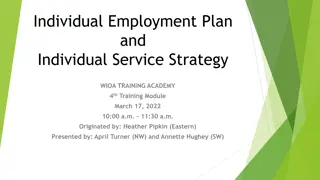
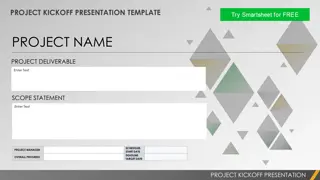
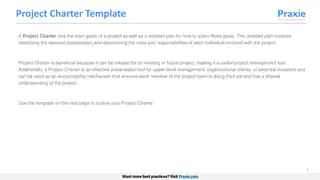
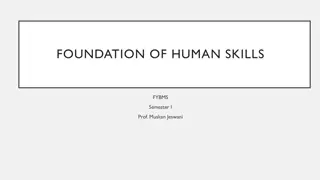
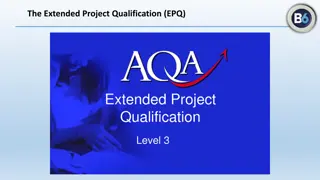
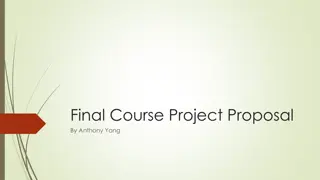
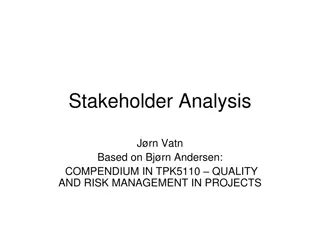
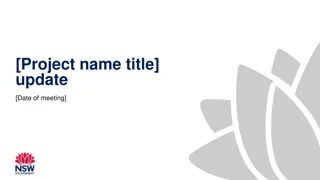

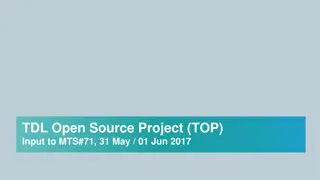
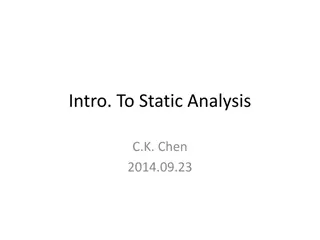
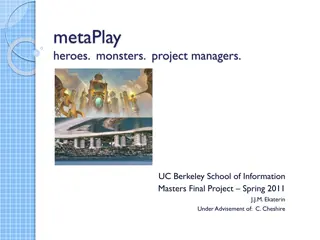
![Project Initiation Document for [Insert.Project.name] [Insert.Project.number]](/thumb/226757/project-initiation-document-for-insert-project-name-insert-project-number.jpg)
